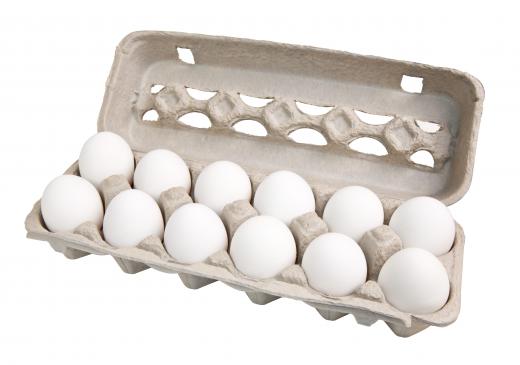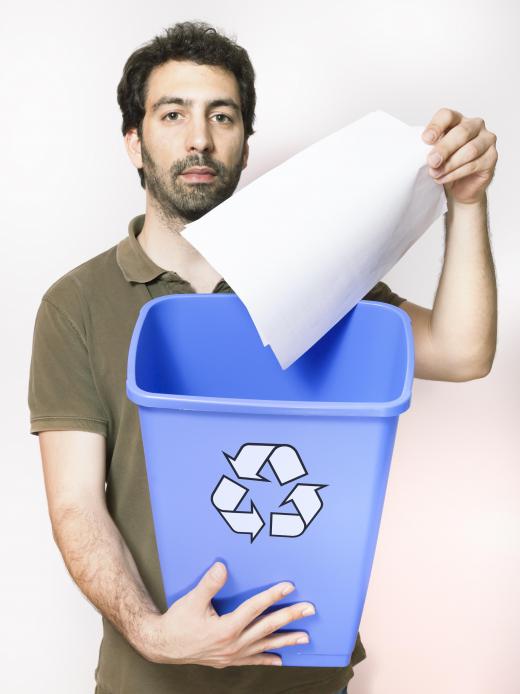Pulp manufacturing entails collecting a variety of organic materials and combining these materials with water, chemicals, and heat, which reduces paper and plants into cellulose fibers. Some companies in the paper and pulp industry dehydrate the pulp, roll the product into sheets, and bundle the recycled paper for shipping to paper-making factories. Other companies manufacture and process the pulp on-site before using it to make various paper products.
Many companies acquire used paper products for pulp manufacturing. The paper is chopped or shredded and combined with water in large vats. Pulp manufacturers might add chlorine or hydrogen peroxide to the mixture to remove ink. The paper products absorb the liquid and eventually dissolve into cellulose fibers which are strained from the liquid.

The wet fiber mixture often undergoes a molding process, which produces beverage trays, egg cartons, and other configurations that function as support systems in packaging. Pulp manufacturing companies transfer the wet mixture to single or double molds which are then pressurized, removing anywhere from 70% to 90% of the moisture. Once formed into the desired shape, the molded paper is transferred to ovens that further dehydrate the product.

The companies that recycle paper for packaging typically manufacture four different categories of products. Manufactures specially design thick wall molded paper with a smooth exterior surface. The molded paper may have a thickness of up to 0.5 inches (1.27 centimeters). Companies generally use two molds when creating thin walled products, which produce smooth surfaces on both the top and bottom of the container that may measure up to 0.18 inches (0.45 centimeters) thick. These are often used for food packaging.
Thermoformed fiber products contain highly condensed cellulose fibers that are heat and pressure treated while in the mold. Though only measuring 0.125 inches (0.3 centimeters) in thickness, the fiber density provides increased strength compared to other molded products. Processed molded products may contain chemical additives for increased durability. Additional processing might involve cutting the molded paper into specific shapes or applying a protective coating.
Besides recycling paper, some pulp manufacturing companies use plants or wood as a source of cellulose fibers. Factories around the world might use leaves from abaca plants, jute, or sisal. After chopping the plants into pieces, large vats are filled with the plant material, chemicals, and water, and the mixture is cooked until the pieces dissolve into fibers. Wood is often recycled in a similar manner.
